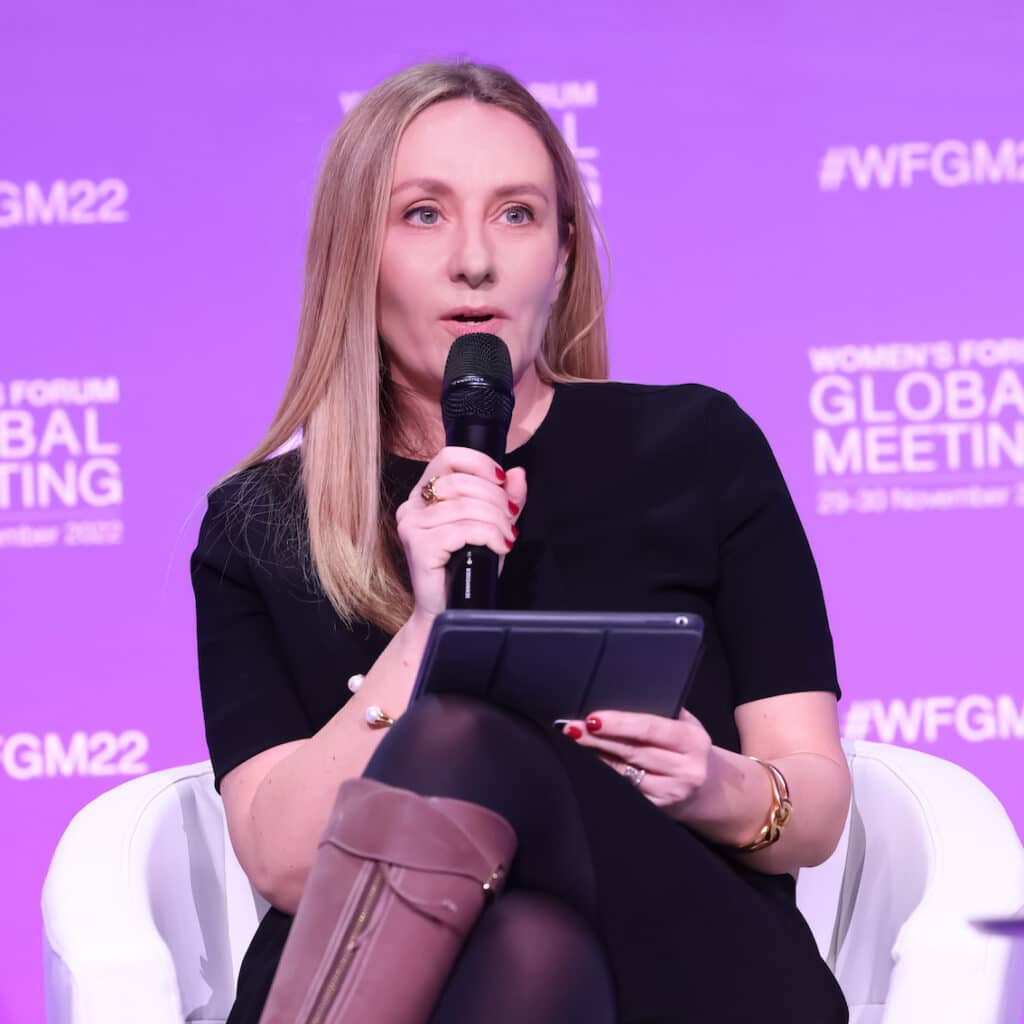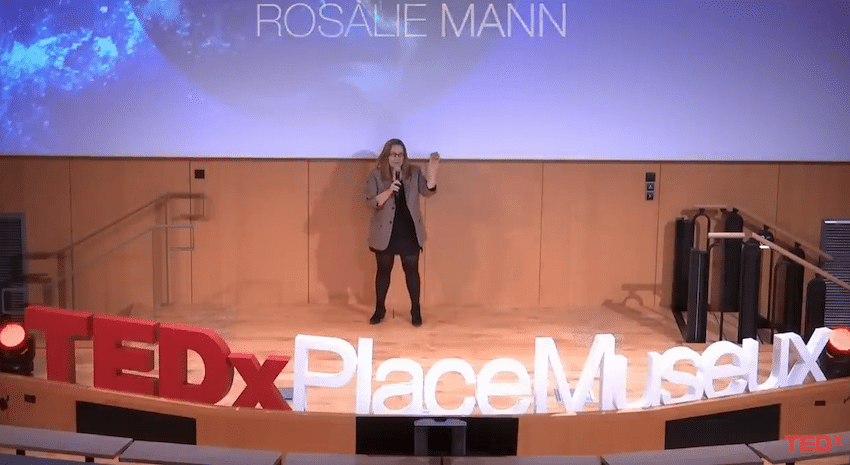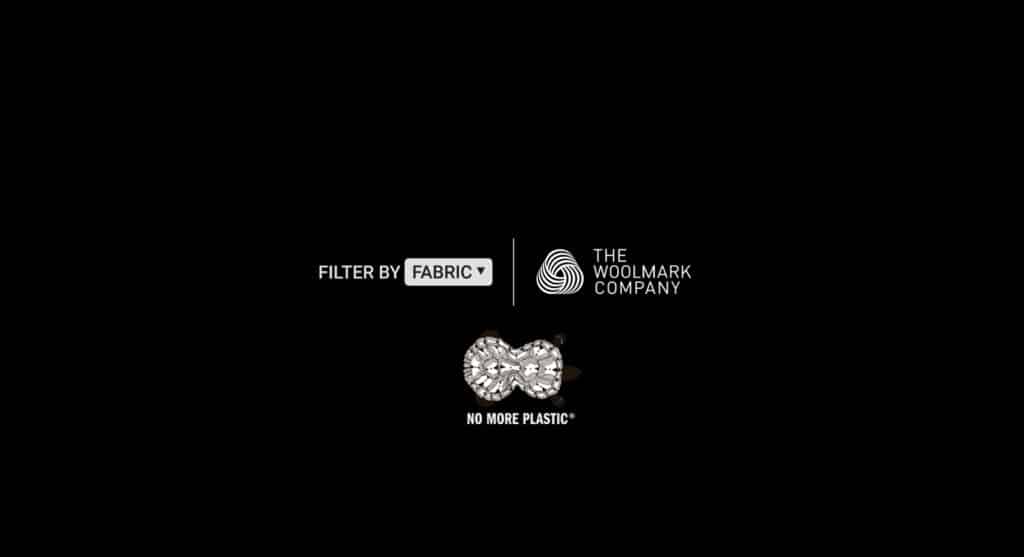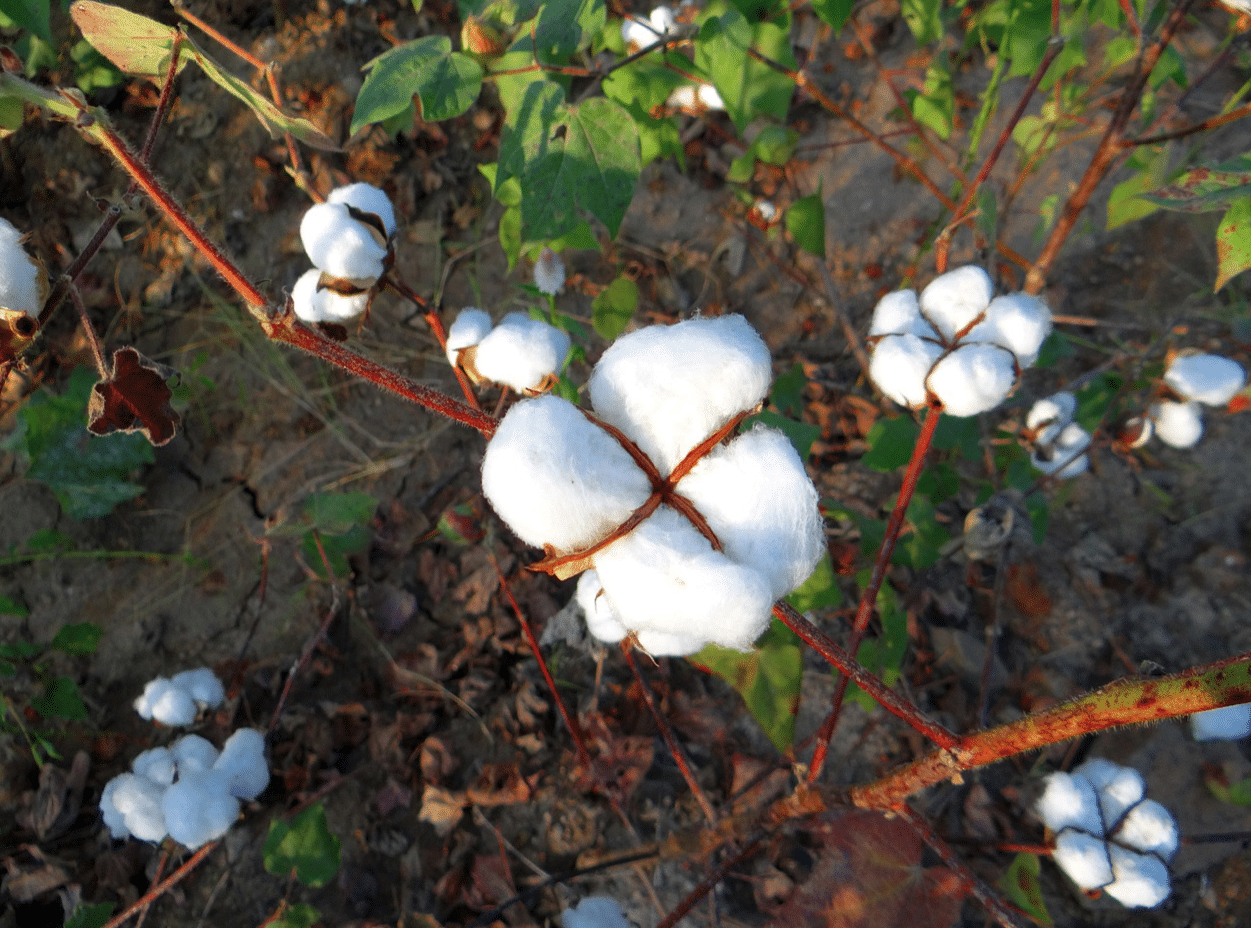Rosalie Mann is at the heart of a profound paradigm shift. She founded No More Plastic Foundation a not-for-profit organisation – which warns of the challenges of plastic pollution around the world – following a sudden realisation that the air is being polluted by microplastics. In this exclusive interview, she explains her journey and the actions she is taking to “de-plastify the planet“, which is literally poisoned by this material. The aim is, simply but virtuously, to restore nature to its rightful place and ensure the survival of life on Earth.
When did you create the No More Plastic Foundation, and what was your environmental awareness journey like?
No More Plastic Foundation was founded on June 8, 2018, in celebration of World Ocean Day. I wish I could tell you that my environmental awareness came about after deep reflections and a profound connection with nature, but unfortunately, it happened quite belatedly and rather abruptly. For a significant period, I was caught up in the whirlwind of a busy life, balancing professional and personal responsibilities, with environmental concerns feeling like a distant realm. This all changed when these concerns came crashing into our lives due to our son’s health issues.
Since birth, he had been suffering from chronic asthma, but over the years, his respiratory difficulties escalated. One evening, in the emergency room, faced with my anguish, a doctor, perhaps wanting to provide some comfort, told me, ‘It’s normal; it’s the pollution.’ The juxtaposition of those two words in the same sentence felt like a shock.
How had we come to a point where pollution is considered a normal state, something we had to tolerate or live with? It was at that precise moment that I resolved to take action. I could no longer bear witness children suffering or living with an illness that could have been prevented if we hadn’t been inactive or in denial.
By reaching out to experts and scientists, I became fully aware of the harmful effects of microplastics on health and the environment, and with one of their most insidious manifestations: air pollution.
What is your mission, and what actions have you taken?
Our mission is to act in preventing plastic and microplastic pollution, which has become a public health issue. We aim to raise awareness among the public and policymakers about the effects of plastic overconsumption and overproduction. We are working to implement measures to combat the scourge of plastic pollution and promote sustainable alternative solutions.
Over the last five years, we have played a role in bringing awareness to the detrimental effects of microplastics on health, and we continue to raise awareness on the issue, with a particular focus on two crucial points: the heightened vulnerability of women to plastic pollution and the recognition that plastic recycling is not a viable solution; it exacerbates the problem.
Why, in your opinion, is it so important to preserve nature?
There is probably nothing more beautiful and essential than what nature offers us. Nothing can equal the beauty, generosity, and intelligence of nature. It provides us with life’s essentials such as water and air. This is why ecology should not be a matter of political partisanship. Ecology should transcend political divisions to become a national cause.
Every day, plastic pollution silently poses a significant threat to nature, and this should be a concern for all of us. If we fail to take decisive actions immediately, we are heading towards a future where we will be compelled to recreate the water and air that nature so abundantly provides us with in a laboratory. As citizens, we bear a great responsibility to urge our governments to step up to the challenge.
Consider the Mediterranean Sea, for instance. Each year, nearly 229,000 tons of plastic waste are dumped into the Mediterranean, which is equivalent to more than 500 shipping containers per day.
What is the cause ? Plastic has been introduced into every industry, right down to our children’s mouths and our most intimate daily lives. We are only just beginning to comprehend the environmental, economic, and health-related toll of this disaster.
With its idyllic landscapes, the Mediterranean Sea is one of the most frequented seas, which also makes it the one currently holding over 250 billion nearly invisible microplastic particles.
As its name suggests, – ‘in the midst of lands‘ – its location has become an exacerbating factor in the concentration of plastic pollution. It has concentrations four times higher in microplastics per square kilometer than the 7th continent. This alarming realization should provoke collective indignation and prompt us to take concrete actions to safeguard this vital resource.
The Mediterranean Sea is one of our most precious legacies, akin to an inheritance we bequeath to humanity, holding universal significance. One concrete measure we could implement is to discontinue the notion of plastic recycling, which worsens an already catastrophic situation.
One of the critical strategies to combat plastic pollution in marine ecosystems involves mobilizing citizens to call upon the government to improve waste collection systems at sea, not for recycling but for eradication. Enzymes capable of breaking down this waste are now available, and this solution should be implemented on a large scale in recycling facilities.
We must let go of the misconception that recycling will solve the plastic pollution problem. The longer we cling to the preconceived idea of plastic recycling, the worse the situation becomes. It’s time to explore new avenues and methods to effectively eliminate plastic waste while reducing production at the source. We must never forget that plastic is a toxic substance throughout its entire lifecycle.
What are microplastics?
Microplastics are minuscule plastic particles, measuring less than 5 mm in size, formed through the degradation of plastic, either from the wear and tear of various products like synthetic clothing, sneakers, and tires, or from the breakdown of plastic waste in the environment, particularly in the ocean. Nanoplastics are even smaller plastic particles, measuring less than a hundred nanometers or a micrometer, invisible to the naked eye, and capable of infiltrating human skin and organs.
Their presence in the environment, including water and air, raises concerns regarding their impact on human health. Research in this area is still ongoing to gain a better understanding of the potential consequences of nanoplastic exposure.
Due to their diminutive size, micro and nanoplastics have the capability to contaminate the entire food chain. They function as “toxic sponges,” absorbing additional harmful chemicals present in the environment as they break down. This is why recycling plastic essentially equates to recycling poison.
It’s estimated that each individual ingests approximately 2,000 micro-pieces and plastic particles every week,equivalent to the weight of a credit card. The long-term effects of these microplastics on human health are still being investigated, but numerous studies have already indicated that microplastics contain stabilizers or chemical agents, which are endocrine disruptors. They act like ” pollutant sponges” and are detrimental to the health of animals that ingest them, as well as humans, potentially leading to severe health issues such as obesity, cancer, endometriosis, or infertility.
Increasingly, research demonstrates that the same characteristics that make plastic a lightweight and incredibly durable material also make it a pervasive and persistent threat to human health and ecosystems, as it persists in the environment for centuries.
Furthermore, plastic pollution is primarily an invisible pollution. It begins long before plastic waste becomes visible. Every plastic product generates micro- and nanoplastics throughout its lifecycle.
An example? Simply wearing sneakers releases microfragments of plastic into the environment with each step due to the material abrasion on the ground. Similarly, riding a bike with plastic tires results in the release of microplastics with every friction on the road. This subtle yet omnipresent form of pollution is a fundamental aspect of plastic pollution and necessitates special attention to mitigate its impact on the environment and human health.
Unfortunately, this aspect is frequently disregarded and downplayed by the plastic recycling industry, which seems to prefer to overlook this issue to continue its activities at the expense of public health.
What lifestyle should one adopt to avoid plastic pollution?
The most effective way to reduce our exposure to plastic pollution would be to decrease the production and use of both virgin or recycled plastics. The more we are exposed to plastic, the more we end up ingesting. It’s easy to place blame on the consumer, but they can’t be held responsible for everything. Often, we are unaware that we are consuming plastic. Consumers can only exert a limited influence on their consumption. This is why we advocate for political action.
It is essential to establish clear and stringent legislation, including measures such as imposing a tax on microplastics for manufacturers, proportionate to the quantity of plastic they produce and sell. This tax would enable the government to establish sustainable solutions for plastic collection and destruction, through methods like enzymatic breakdown. We must stop believing that recycled plastic is a solution to the plastic pollution problem. It is not, it never has been.
The holiday season is rapidly approaching, and many parents have already planned to purchase plastic toys for their children. We can’t fault them; those who manage to go without plastic are commendable, but we should cease making those who still purchase such items feel guilty. The responsibility lies with manufacturers to change and offer safe toys for our children. It’s not acceptable for this toxic material to continue to be used in toys that have nearly constant contact with our children. Our governments must recognize the urgency of this issue.
Almost all of us consume plastic in one way or another, and it’s not due to a lack of efforts to reduce it. Most of the time, we end up buying plastic, sometimes unknowingly. Consider, for example, a bamboo toothbrush; its bristles are made of nylon, which is a form of plastic. Or take chewing gum or tea bags, for instance.
Here’s another example: tampons. They contain nearly 6 per cent of plastic, and sanitary napkins contain nearly 90 per cent of plastic. It’s unacceptable that women unknowingly put their health at risk, particularly during their most vulnerable moments, such as during menstruation.
Women tend to absorb toxins from chemicals present in plastics more readily because of the higher levels of estrogen and greater fat content in the female metabolism, which implies a heightened sensitivity to certain endocrine disruptors.
These toxins are stored in adipose tissues, with a more pronounced concentration occurring during periods such as puberty, menstruation, pregnancy, breastfeeding, and menopause.
Collectively, these periods span more than half of a woman’s lifetime. For this reason, I recommend that all women pay particular attention to their plastic consumption during these phases and consider adopting a “plastic diet” to minimize their exposure to these endocrine disruptors:
- – Avoid plastics in categories 1, 3, 6, and 7, as they are the most toxic.
If complete avoidance is not feasible, opt for plastics in categories 2, 4, and 5, as they are less toxic.
- – Store food in these materials for the shortest time possible and never reheat them, even if the label suggests it’s safe Also, never leave a plastic bottle exposed to direct sunlight, and under no circumstances consume its contents if you do.
- – Whenever possible, use glass, stainless steel, and porcelain containers. Try to transfer the foods you purchase wrapped in plastic to glass containers to minimize the duration of contact with plastic.
- – Do not keep worn plastic packaging. In the degradation phase, they become even more toxic.
- – Avoid using plastic plates and cutlery.
- – When buying skincare or cosmetic products, check the composition of both the container and the contents. A plastic container can contaminate its contents, and many skincare products contain plastic ingredients, which we ingest daily through our skin pores. If you see the words “polyethylene” or “polypropylene” in the ingredient list of a beauty or hygiene product, do not purchase it, as this indicates the presence of microplastics in its formulation.
- – When purchasing clothing, always check the label. If it contains synthetic materials (such as nylon, lycra, polyester, acrylic, elastane, polypropylene), it is essentially plastic and thus poses a health risk.
Why is recycled plastic dangerous?
Studies have revealed that recycled plastic is more harmful due to the chemicals it contains, stemming from the recycling process, which endangers our health, especially that of women who use numerous cosmetic products packaged in containers made from recycled plastic. Furthermore, recycled plastic generates 2.3 times more microplastics.
What further compounds the danger of recycled plastic is the way it’s portrayed as an eco-friendly solution. Companies and individuals who use it are celebrated and even awarded for their efforts. This is absurd, and future generations will find our blindness to the reality of the situation bewildering. Recycled plastic is marketed as a scourge, falsely presented as a material that contributes to saving the planet, when, in reality, it worsens plastic pollution and climate change. Recycled plastic wastes our precious time, creating the illusion that we are on the right path.
(Tedx : The Illusion of Recycled Plastic)
The notion that “recycling is better” is, in fact, a misleading and counterproductive concept in the context of plastic. Contrary to common belief, turning to recycled plastic does not guarantee the safety of the product; it increases the material’s toxicity and contributes further to plastic pollution through the microplastics it generates.
It’s high time we stop treating plastic as a precious resource that can be reintroduced into circulation through recycling or reuse. Plastic is a toxic material throughout its life cycle. Even when recycled, it remains toxic. With recycled plastic, all we’ve done is reintroduce into circulation the poison that continually poisons us in a never-ending loop with each recycling cycle.
Improving plastic recycling rates and supporting technologies that enable the recycling of a broader range of plastics are essential for a circular economy but not for our health or the future of our ecosystem. It’s disconcerting that we’re led to believe that plastic plays an essential role and fulfills many of society’s needs. If this is indeed the case, we have a responsibility to rethink our society’s direction because plastics are inherently toxic. Asserting that plastic simplifies and ensures processes such as food distribution and preservation is misleading. Consuming products wrapped in plastic, including recycled plastic, puts our health at risk.
So, where does genuine safety lie in this situation? It’s essential to challenge this notion and take measures to reduce our reliance on toxic plastic, embracing healthier and more sustainable alternatives.
The plastics industry seeks to convince us that plastics hold value throughout their life cycle. However, plastics generate microplastics and chemicals throughout their existence.
Plastic stands as one of the most significant scourges of our century, with consequences reaching far beyond our imagination.
Regarding fashion, what would you say to consumers of clothing and accessories made from synthetic fibers to discourage their purchases and encourage them to choose natural fibers?
The idea is not to discourage but to inform them. Polyester, nylon, acrylic, and other synthetic fibers – all of which are forms of plastic – now make up over 60 per cent of the material used in clothing worldwide.
They are nearly everywhere in fashion, and this is for a straightforward reason: synthetic plastic fibers are cheap, allowing the fashion industry to achieve larger profit margins.
Synthetic fibers are affordable because they are made from plastic, which is produced in astronomical quantities. Large-scale plastic production is also supported by the petrochemical industry because plastic is derived from petroleum products. Large-scale plastic production is also supported by the petrochemical industry because plastic is derived from petroleum products. The packaging and textile industries are the two major contributors to this ever-increasing and devastating inflation.
The excessive production of plastic is significantly driven by demand and consumption of this material in various industrial sectors. The higher the plastic production, the more competitive it becomes in terms of cost compared to other materials.
It is essential to tax and regulate the use of this material,for example, requiring all companies producing and selling plastic-based products to label their products, stating that they release micro-particles into the air and water during their use and washing, and warning of the health risks they pose when in contact with the skin or body.
We are proud to partner with Woolmark to launch an advocacy initiative in the fashion industry called ‘Filter by Fabric’: www.filterbyfabric.com.
“Filter by Fabric” is a compelling call to action aimed at every fashion brand, retailer, textile designer, publisher, and content creator, urging them to commit to clear and truthful product labels that provide accurate fabric descriptions.
It also encourages citizens to consider the impact of fabric composition for making sustainable choices. For instance, a product containing synthetic materials should be clearly labeled as containing plastic.
Fashion needs to be more transparent and sustainable, and a clear consideration and communication of fabric choices are crucial.
According to a survey conducted by Woolmark:
- • 1 in 3 people rarely or never checks fabric composition when making online purchases.
- • 77 per cent of people believe it is essential for clothing brands and retailers to clearly specify the materials used in their clothing.
- • 1 in 3 people believe it would be easier to make sustainable choices if stores facilitated filtering by fabric type.
- • 60 per cent of people believe that if stores included fabric composition in the product name or allowed consumers to filter by fabric type, it would make sustainable decision-making easier.
To reduce excessive plastic use, it is necessary to rethink our consumption model and it is essential be transparent about the materials used.
Synthetic materials are highly favored by designers because of their extreme versatility and their offering of stretchability and breathability, particularly in sportswear, as well as warmth and durability in winter clothing. What’s surprising is that we think only synthetic materials can provide these attributes. Wool and seaweed, for example, can replace many synthetic materials, but they are often overlooked due to cost considerations compared to synthetic materials.
Take Optim as an example, a water-resistant fabric made from 100 per cent Merino wool, without the use of chemicals or synthetic materials.
The fiber extension technology of Optim transforms merino wool fibers into threads, which are then woven into a water-resistant fabric. The thread density of the fabric is what gives Optim its water-resistant properties, with its tight warp and weft of fine Merino wool yarns that have been stretched during processing.
When the fabric is wet finished, the yarns contract to create an extreme tightening of the fabric structure to increase its density, making the fabric water-resistant. Solutions and alternatives already exist; they’re just not used on a large scale. This is why it is crucial for customers and consumers to understand the long-term impact of these synthetic fibers, whether they come from virgin plastic or recycled plastic, on their health and the environment.
Estimates vary, but generally, a single load of laundry releases hundreds of thousands of fibers from our clothing into the water supply. Consider how many people launder their clothing daily and the quantity of clothing we all possess.
However, there is another aspect we must not forget: our polyester or synthetic material clothing, shoes, and accessories also generate microplastics simply by wearing them. A study conducted in February 2020 demonstrated, for the first time, that the direct release of microfibers from clothing into the air due to wear is equally significant as the release into the water.
Presently, there is considerable interest in wastewater treatment technologies. However, these findings suggest that more effective measures may result from modifications in textile design, aiming to reduce emissions into both the air and water. Our polyester or synthetic material clothing pollutes both the air and water.
Until the textile and fashion industry eliminates synthetic materials, here are three recommendations:
- Buy less clothing: opt for thoughtful purchases over impulsive ones and choose clothing that can be worn in any season whenever possible.
- Buy fewer synthetic textiles: always look closely at the composition labels.
- Limit washing and dry cleaning: only wash or send items for dry cleaning when absolutely necessary to reduce the release of microfibers into the water.
What are your projects ?
I am currently in the final stages of writing a book about the impact of plastic pollution on health, which is set to be published in 2024 by Editions La Plage, a division of Hachette.
It is crucial to comprehend that this invisible pollution has evolved into a public health concern.. An expanding body of studies is shedding light on the issue, and it is just the beginning. Microplastics have been found in the bloodstream, brain, lungs, and heart. We now understand that microplastics can damage human cells and even adhere to the outer membranes of red blood cells, impeding their ability to transport oxygen. Cause-and-effect links have been established between plastic and issues such as infertility, immunity problems, and the rise of chronic diseases like diabetes, obesity, Crohn’s disease, endometriosis, cardiovascular diseases, breast cancer, or colon cancer. Confronted with this health emergency, it is imperative to take decisive actions to eradicate this pollution by drastically reducing plastic production and discontinuing plastic recycling.
Additionally, we are actively advocating for the implementation of laws and regulations that mandate industries employing virgin or recycled plastic in their products to refrain from using terms like “eco-friendly“ or any other descriptors that imply this material contributes to the well-being of the planet in their marketing and advertising, with the imposition of legal sanctions for deceptive business practices.
On September 4th of this year, the United Nations Environment Programme (UNEP) released a « draft zero » of the forthcoming international treaty against plastic pollution, with the final conclusions expected by the end of 2024. There is still time to transform this text into a historic landmark if we are genuinely committed to de-plasticizing our planet. Though we are far from an ambitious and courageous text, we hold hope that public opinion will exert pressure on leaders. The next sessions are scheduled for November 2023 and then April 2024.
This commitment, the most significant since the Paris Climate Agreement, could herald a historic turning point in the fight against plastic pollution. With it, we have a unique opportunity to eliminate this scourge globally, provided brave decisions are made, such as discontinuing recycling and investing in the eradication of plastic waste. We should also consider banning the use of recycled plastic in everyday products for children and women.
The risks associated with plastic pollution are far from trivial and underestimating them is unwise. However, we are only just beginning to fathom all the adverse effects of its impact on our health. It is just the beginning. The studies are relatively recent, underscoring the importance of raising awareness and disseminating these research.
Much like our awareness of the deadly dangers of tobacco, I dream of the day when the public will understand just as much that plastic, including recycled plastic, contributes to the extinction of the living world. We are living through a critical period of unprecedented upheaval in human history Let’s rewrite history with this treaty. We are all part of the solution. We must not capitulate to this plastic tsunami. It is not an inevitability but one of the greatest challenges we face. Let’s rise to it.
Sign the manifesto here :https://www.nomoreplastic.co/traiteinternational
No More Plastic : https://www.nomoreplastic.co
No More Plastic Kids : https://www.nomoreplastickids.com
Photos : No More Plastic Foundation








